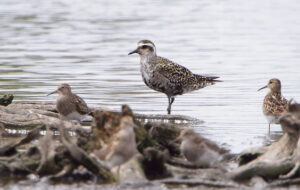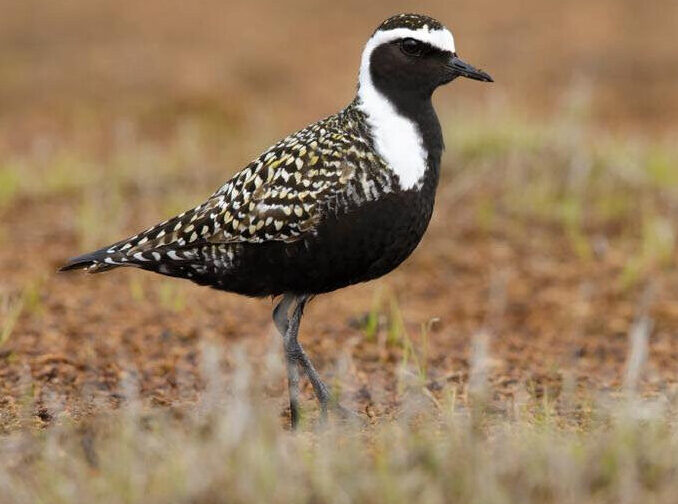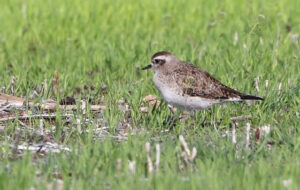American Golden-Plover, Pluvialis dominica
Bill Rowe
A stunning bird in breeding plumage, the American Golden-Plover makes an equally stunning migration flight each year, from its breeding grounds on the Arctic tundra of Canada and Alaska to its wintering range on the grasslands of Argentina and Uruguay, and then back again. This makes it one of our champion migrants, like the Pectoral Sandpiper that we featured last August and a few other shorebirds. For their return in the spring, the majority of golden plovers come up through the original prairie and plains regions between the Appalachians and the Rockies, with some along the coasts. Flocks are first seen in the U.S. in March; they often choose open agricultural fields for their stopovers, and they generally reach the high Arctic by late May or early June. There they have just a couple of months to set up territories, build nests, and raise young before it’s time to be on the move again. Like other shorebirds that breed there, the long-term future of the American Golden-Plover is open to question as the planet warms and the Arctic loses its Arctic-ness. Taken together, the plovers form a distinctive worldwide family with over 60 species, nine of them breeding on our continent, including the familiar Killdeer. As a group, they are pretty easily distinguished from sandpipers by their plump shape, relatively short, stout bills, alert posture, and run-and-stop movements as they feed.
IDENTIFICATION: The American Golden-Plover is a fine example of the change from a dull, cryptic nonbreeding plumage into boldly-marked breeding dress. This is accomplished by a molt that occurs as they are migrating north, so that March birds look mostly plain brown with a white eyebrow and dark cap (see below left), while those we see in May are unmistakable, like the male depicted above (female plumage is similar but a little less crisp and clear). The plain earlier birds, seen in flight, appear as a flock of medium-large, sharp-winged brown shorebirds with no obvious field marks, maneuvering around over the fields, then dropping and disappearing as they blend in with the dirt and grass. The main source of confusion, in either plumage, would be their grayer cousin the Black-bellied Plover, which is slightly larger with a striking white tail and a black patch under the wings near the body. Their calls will distinguish them, too.
ST. LOUIS STATUS: Uncommon overall but occasionally numerous in spring, when flocks of dozens to hundreds are possible out in open farmland or in wetlands. They are here now, so keep looking!
Learn more and listen to the calls of American Golden-Plovers here.
Space
Early-April bird,
still in nonbreeding plumage
Photo Credit: Al Smith
SPACE

August adult, molting out of breeding plumage; with Pectoral Sandpipers
Photo Credit: Al Smith





